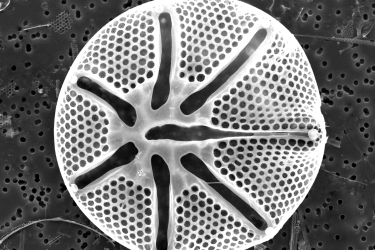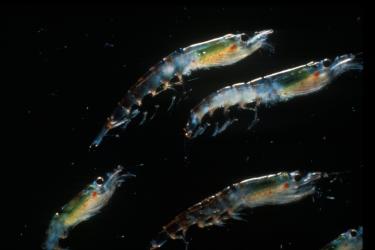Phytoplankton (tiny single celled, photosynthetic organisms ) are beautiful. They help the ocean draw down atmospheric CO2 and provide the base of the food chain leading up to our productive coastal fisheries-- thanks buddies!

Satellite image of surface chlorophyll with images of phytoplankton species found in nearshore and offshore transects. In the bottom right photo, some of the most numerous genera are: Asterionellopsis, Chaetoceros, Odontella, and Thalassiosira. The most abundant phytoplankton in the bottom right photo is Asterionellopsis. It looks like a spiraling star and is a chain forming diatom. It can form fairly dense blooms occasionally, which is what we are seeing in the water near shore. Photo: NOAA Fisheries
We can use a special microscope to see them where they work-- a thimble full of seawater can hold several thousand of these beauties, each with diverse form and function. We can then zoom out to see a composite of their abundance from space.

